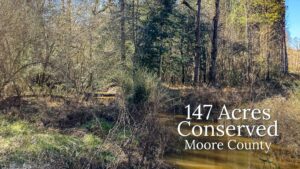
By: Diana Tarrazo – undergraduate student at Duke University studying Environmental Science.
Say you went to the doctor for an illness, and rather than offering you a remedy, she gave you a death sentence. Chances are you aren’t going to go back to see her.
Conservation biologist Stuart Pimm feels the same way about his work with species protection. It is easy to say that the earth is screwed and species are doomed. But that is not the business Pimm is in. “You go to your physician because you hope that the medical care that you’ll receive will make you feel better, maybe heal you, maybe save you, or maybe give you a longer life. I feel the same way about conservation. I’m in the business of saving species’ lives.”

Everything changed in 1978 when the 29-year-old Englishmen went to the Big Island of Hawaii for a field project studying the endangered Hawaiian honeycreepers, small vermillion red birds endemic to the island. The project was funded by the World Wildlife Fund, which then had a total of 14 employees.
The Big Island is considered a tropical paradise—a place wild and humid, deliciously rich in natural biodiversity. Pimm went there wide-eyed with field guides to the fauna and flora in hand. What he found in the forest shocked him. Pimm’s field guides from the early 1970s were listing species that were already extinct, or about to become so.
“ [Before I went] I thought, ‘I will see everything there is to see,’ and I didn’t. Some of the species were already extinct, and some of the species were extinct across very, very large areas. I saw the last single individual alive of [some plants]. And all of that made a profound change in me.”
At that moment, Pimm realized something that has shaped his life as a conservation biologist: that humans have an ethical an obligation to protect nature.
“In the work that I did in the mid- to late-70s, I started doing what we would now call conservation biology. But back then there was not a name for it, there was not a society, there was not a journal.”
Then one day Pimm got a phone call from a man named Michael Soule, who invited him to a meeting about conservation biology. “This man said, ‘you don’t know who I am but we have friends in common, and I’d like you to come to a meeting about conservation biology.’ I said, ‘What’s that’? And he said, “Well whatever it is, you’re doing it. So I went to the meeting, and I thought ‘this is it.’”

Today, Pimm is a world leader in the study of species extinctions and what can be done to prevent them. He is the author over 270 scientific papers and four books, and the Institute of Scientific Information has ranked him as one of the most cited environmental scientists for over a decade.
In 2006, Pimm was awarded the Heineken Prize for Environmental Science—the Nobel of the ecology world. He used some of the money from the Heineken to start SavingSpecies, an NGO that aims to conserve biodiversity by identifying the most at-risk areas in the world and working with local organizations to “connect, protect, and restore” habitats to prevent species extinction. “We talk about CPR for the planet: we connect, we protect, we restore. I view it in very much those terms. I’m looking for solutions.”
SavingSpecies is currently focusing efforts in South America. When Pimm founded SavingSpecies in 2008 it was to buy a particular piece of land in the Atlantic Forest of Brazil. This land was critical for conservation because of its extremely high concentration of endangered endemic species. “The first year I raised $300, and the land cost $300,000 and I felt really bloody stupid. We have setbacks all the time. But you pick yourself up and keep going.”
For a man who is constantly thinking about extinction, Pimm remains remarkably chipper about his work. “Do I get depressed? I’m too bloody busy to get depressed most of the time! We’ve done some bad things and I’m madder than hell, but getting back into nature always inspires me. I am struck by the things that we can do to make things better.”
